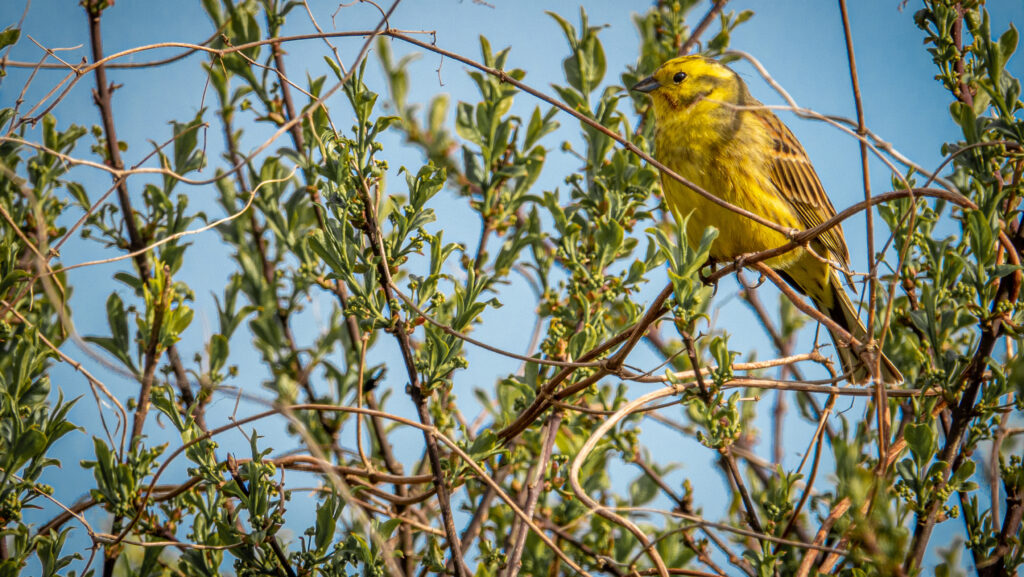Farmland bird count shows success of farmer-led conservation
 © Adobe Stock
© Adobe Stock The results of the 2025 Big Farmland Bird Count show some red- and amber-listed species on the rise, emphasising the success of farmer-led agri-environmental schemes.
The encouraging figures make a strong case for the UK government to continue investing in schemes such as the Sustainable Farming Incentive (SFI) and Countryside Stewardship in England to meet nature recovery targets, according to the Game & Wildlife Conservation Trust (GWCT).
See also: Farmers’ conservation efforts key to reversing bird decline
Run by the GWCT since 2014, and sponsored by the NFU, the Big Farmland Bird Count (BFBC) encourages farmers and landowners to go out and count the species and number of birds on their land during a two-week window in February every year.
A total of 358,913 birds, belonging to 125 species, were recorded across 283,227ha and 1,369 farmers, land managers or their helpers participated in year’s count, of which 65% of farms were in agri-environment schemes.
Ups and downs
Some species were sighted less this year, including red-listed fieldfares which were down 52%, long-tailed tits were down 27%, and curlew saw a 25% drop, year-on-year.
However, recordings of red-listed common gulls were up 112% and sightings of amber-listed kestrels had increased by 182%.
In total, 145,681 red-listed birds were counted including 26 different species. Of these, the most abundant were starling, lapwing, common gull, linnet and fieldfare.
Nearly half undertook supplementary feeding of birds in winter and many had planted wild bird seed mixes on their land to provide food, both of which are options in the SFI.
Schemes offer ‘value for money’
However, with farmland birds continuing to decline across the nation, the GWCT is clear that the trend can only reversed if farmers are encouraged and properly funded to implement conservation measures.
“Of immediate concern are the several thousand Countryside Stewardship agreements that expire on 31 December – thousands of hectares of valuable habitat could be lost unless government provides urgent reassurance to these farms that the SFI will be available to them next year,” said GWCT director of advisory and education Roger Draycott.
To ensure continued investment, farmers need to demonstrate that these schemes are delivering value for public money, Mr Draycott said.
“One of the ways farmers can do this is by taking part in the annual BFBC,” he added.
BFBC contributions in Wales and Scotland
Farmers and land managers across Wales and Scotland made a strong contribution to the 2025 Big Farmland Bird Count, helping to build a clearer picture of farmland bird populations in both nations.
In Wales, 34 farmers and land managers counted a total of 4,565 birds, belonging to 81 species, across 5,727ha of farmland.
The most abundant species spotted were starling, jackdaw, house sparrow, wood pigeon and robin.
In total 1,784 red-listed birds were recorded, belonging to 16 different species.
Of the 34 farms, 14% were in agri-environment schemes, and 45% undertook supplementary feeding of birds in winter and many had planted wild bird seed mixes on their land to provide food.
In Scotland, 72 farmers and land managers counted a total of 13,345 birds, belonging to 97 species, across 31,550ha of farmland.
The most abundant species recorded were wood pigeon, jackdaw, chaffinch and rook.
In total, 3,667 red-listed birds were counted, including 19 different species, with lapwing being the most abundant.
Of the 72 farms, 29% were in agri-environment schemes, 58% undertook supplementary feeding of birds in winter, and many had also planted wild bird seed mixes.
